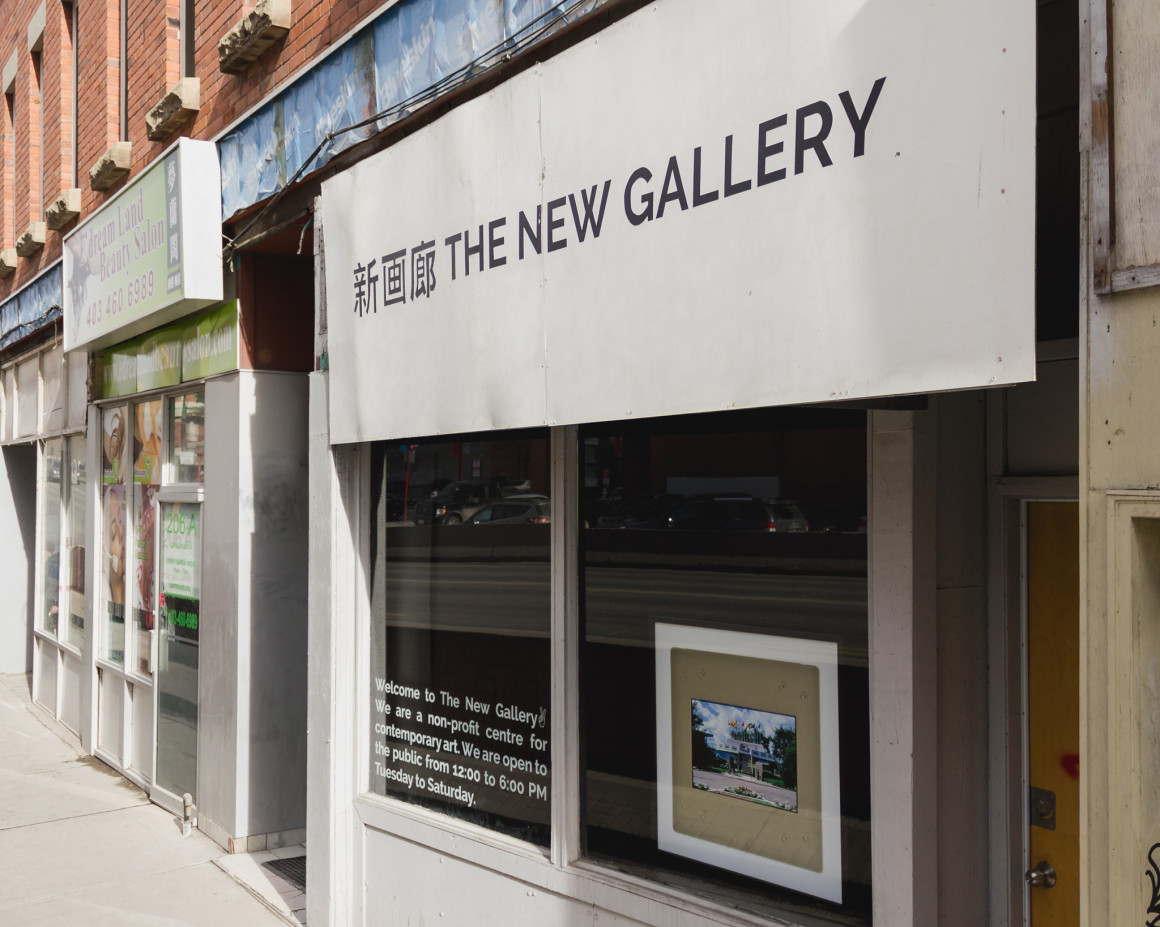
The truth is out there, north of Edmonton
By Alexander Kim, February 26 2015 —
There’s a UFO landing pad in St. Paul, a town of 6,000 about two hours north-east of Edmonton.
The landing pad and its historical context are the subject of Space Fictions & the Archives, an exhibition at The New Gallery by Canadian artist Jacqueline Hoang Nguyen.
Nguyen contrasts the silliness of the landing pad and the earnestness of the people who built it with Canada’s immigration policies and colonial past.
“I’m using the site of the UFO landing pad as a symbol to talk about the arrival of aliens — aliens from out of space of course, but aliens also as immigrants,” Nguyen says. “This site was constructed in 1967, which coincided with the implementation of the point-based system, the immigration policy that made Canada known as being multicultural.”
Located in the centre of town, the landing pad is a concrete oval about eight feet off the ground and features a wall outlining a map of Canada. It was built in 1967, in celebration of Canada’s centennial. Jules Van Brebant, St. Paul’s mayor at the time, said it was meant “to welcome everybody from this Earth, and also extraterrestrial beings.”
The exhibition presents a photograph of the landing platform and a short film titled 1967: A People Kind of Place. The film is the result of two years spent exploring historical archives across Canada. Nguyen weaves footage of the landing platform’s unveiling and politicians talking about multiculturalism together with clips detailing the stories of St. Paul’s aboriginal community.
She exposes the hypocrisy around the idea of Canada being a multicultural society.
“What is this dream of multiculturalism that has been engineered by a kind of state-fueled ideology? Multiculturalism comes from the implementation of a particular type of immigration system,” Nguyen says. “It’s not a multiculturalism that is imagined by the people.”
Nguyen continues to explore these themes in her current work, The Making of an Archive.
While doing research for Space Fictions, Nguyen was surprised to find little representation of those who immigrated after 1967 in the archives.
“This idea of multiculturalism was put in place in ’67, but then there are no documents or artifacts that are capable of actually encapsulating this paradigm shift that is happening within the Canadian state,” Nguyen says. “And if there’s no way of recording what multiculturalism is supposed to look like, how can we see the trajectory of how multiculturalism has changed or evolved?”
To change this, Nguyen is inviting immigrants and their families to digitize their photos from the time at the Gendai Gallery in Toronto to create a new archive that addresses immigrant experiences. She will conduct interviews and document the process.
Space Fictions & the Archives is on display at The New Gallery until March 28.
